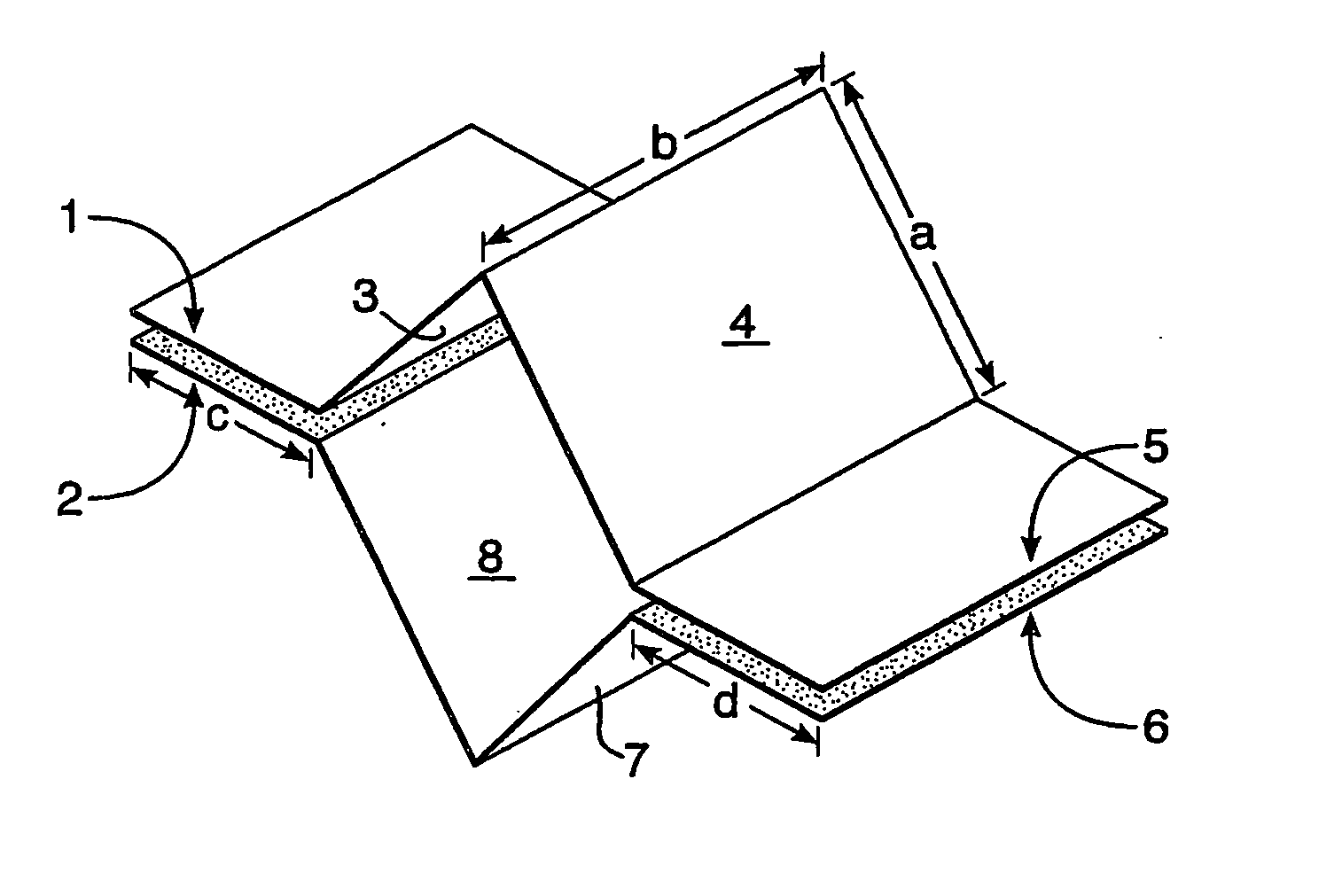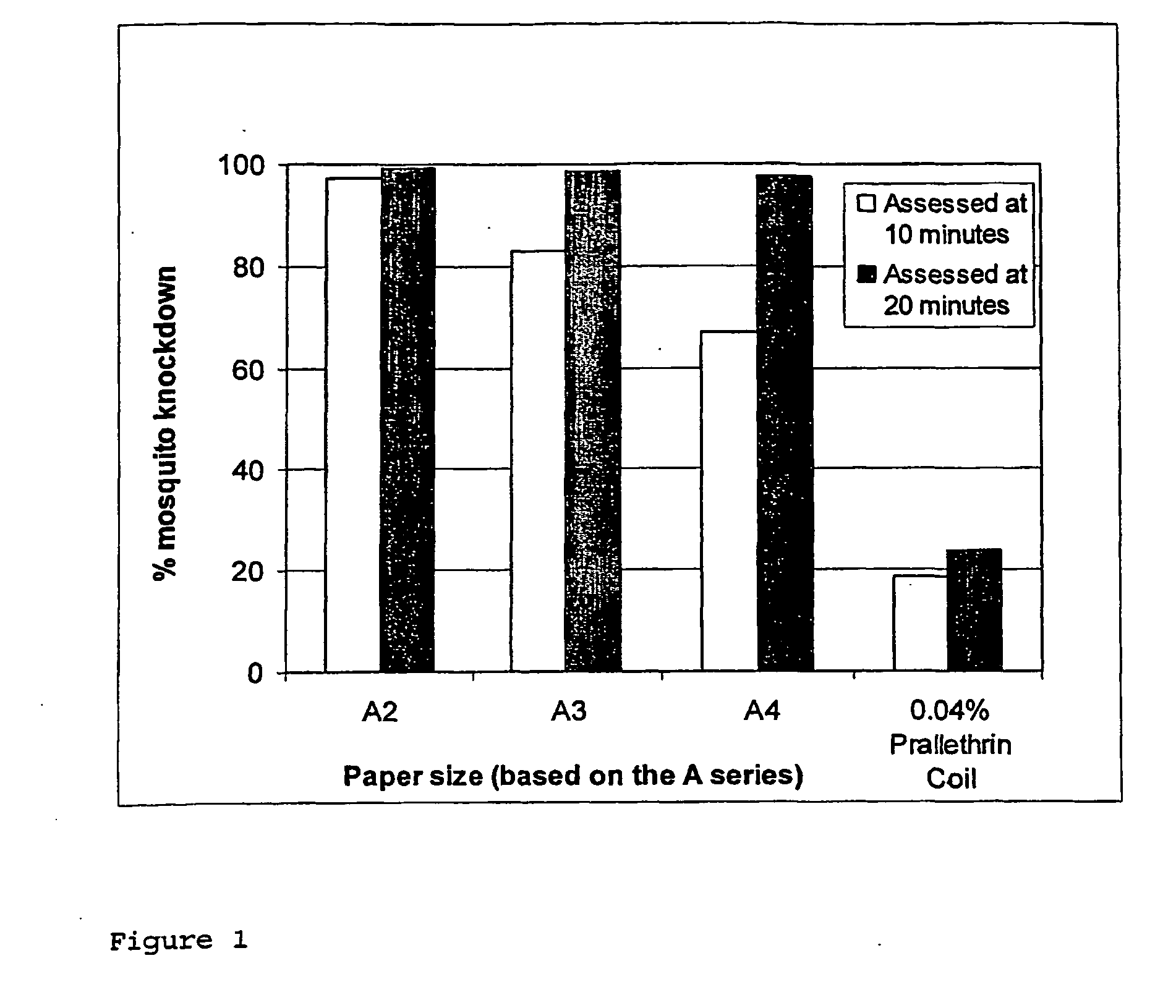Product and Method for Controlling Flying Insects
- Summary
- Abstract
- Description
- Claims
- Application Information
AI Technical Summary
Benefits of technology
Problems solved by technology
Method used
Image
Examples
example 1
[0126]Where the cellulosic based substrate or matrix is a sheet of flat A4 paper:
[0127]The surface area of the flat A4 paper is the sum of the area of both sides of the paper and is calculated as follows:
Surface area=area of one side of paper+area of other side of paper
Surface area=625 cm2+625 cm2
Surface area=1250 cm2
example 2
[0128]Where the cellulosic based substrate or matrix is a honeycomb configuration according to FIG. 5
[0129]FIG. 5 shows one cell of a honeycomb configuration. The surface area of the cell shown in FIG. 5 is the sum of the area of the surfaces exposed to air. There are glue lines between surface 1 and 2 and between surface 5 and 6 which means that each portion of paper forming these surfaces only has one side exposed to air. The portions of paper forming surfaces 3, 4, 7 and 8 all have two sides exposed to air. Accordingly, the surface area for the cell shown in FIG. 5 is calculated as follows:
Surface area (SA)=(SA of surface 1)+(SA of surface 2)+(SA of surface 5)+(SA of surface 6)+(SA of surface 3)×2+(SA of surface 4)×2+(SA of surface 7)×2+(SA of surface 8)×2
Surface area=bc+bc+bd+bd+4(ab)
Surface area=2bc+2bd+4ab
[0130]C) Knockdown Studies
[0131]The inventors have carried out a number of knockdown studies for the control of mosquitoes using paper surfaces impregnated and / or dosed with...
example 3
[0133]Knockdown studies against the Dengue mosquito Aedes aegypti using three surface areas a) A2, b) A3 and c) A4 of 18 gsm paper in the above test chamber were carried out. Each paper was treated with 150 mg of metofluthrin. A mosquito coil containing 0.04% Prallethrin was included as a reference control. The results are shown in FIG. 1.
[0134]The results show that after 10 minutes, an increase in surface area increases product performance. After 20 minutes, all surface areas were equally effective. Further, it shows that all three paper sizes when treated with metofluthrin are more effective than the control.
PUM
| Property | Measurement | Unit |
|---|---|---|
| Temperature | aaaaa | aaaaa |
| Temperature | aaaaa | aaaaa |
| Temperature | aaaaa | aaaaa |
Abstract
Description
Claims
Application Information
 Login to View More
Login to View More - R&D
- Intellectual Property
- Life Sciences
- Materials
- Tech Scout
- Unparalleled Data Quality
- Higher Quality Content
- 60% Fewer Hallucinations
Browse by: Latest US Patents, China's latest patents, Technical Efficacy Thesaurus, Application Domain, Technology Topic, Popular Technical Reports.
© 2025 PatSnap. All rights reserved.Legal|Privacy policy|Modern Slavery Act Transparency Statement|Sitemap|About US| Contact US: help@patsnap.com



